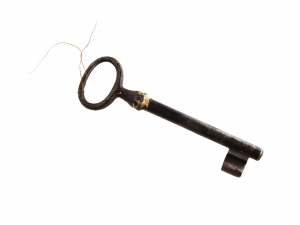 Every 90 days you receive an email from helpinfo@sun.ac.za asking you nicely to change your password. We all know that, although it’s a bit of a nuisance, it’s also necessary for security reasons. But is there a way to simplify the process?
Every 90 days you receive an email from helpinfo@sun.ac.za asking you nicely to change your password. We all know that, although it’s a bit of a nuisance, it’s also necessary for security reasons. But is there a way to simplify the process?
In 2007 Microsoft Research conducted a study and found that the average user has 6.5 internet passwords, each person has approximately 25 accounts with passwords and has to enter 8 passwords per day. And this was in 2007 – imagine what the statistics will look like 5 years later.
If you use more than one device, password changes can become a nightmare. But there are a few steps you can follow to make sure it goes a bit smoother.
Switch off all your devices except for one, for example your laptop.
Sign on at http://www.sun.ac.za/useradm, select the Change Password option and select a new password according to the guidelines supplied on the website. Log out of the network with the Logout option given on http://www.sun.ac.za/useradm. Log onto the network with your new password. Make sure you can access all your network applications – email, internet and networkspace. Switch on all the other devices and type in your new password.
Remember, you can change your password any time at http://www.sun.ac.za/useradm with the Change Password option. Try to stick to the guidelines to ensure you have a secure password – it will safe you a lot of effort and frustration in the long run. If you’ve forgotten your password, you can also reset is by browsing to staff portal.
More information and hints on password changes can be found at https://stbsp01.stb.sun.ac.za/innov/it/it-help/Wiki%20Pages/Change%20password.aspx
 Elke 90 dae kry jy `n e-pos van helpinfo@sun.ac.za wat jou vriendelik versoek om jou wagwoord te verander. Ons almal weet dat, alhoewel dit irriterend is, ook nodig is vir sekuriteitsredes.
Elke 90 dae kry jy `n e-pos van helpinfo@sun.ac.za wat jou vriendelik versoek om jou wagwoord te verander. Ons almal weet dat, alhoewel dit irriterend is, ook nodig is vir sekuriteitsredes.
`n 2007 studie deur Microsoft se navorsingspan het gevind dat die gemiddelde gebruiker 6.5 wagwoorde op die internet het, dat elke persoon ongeveer 25 rekeninge het wat wagwoorde benodig en gemiddeld 8 wagwoorde per dag moet intik! En dit was in 2007, 5 jaar gelede – dink net hoe lyk daardie syfers teen die tyd.
As jy meer as een toestel gebruik, raak wagwoordverandering `n nagmerrie. Maar daar is `n paar stappe wat jy kan volg om die verandering gladder te laat verloop.
Skakel al die toestelle af, behalwe een, bv. die skootrekenaar.
Teken aan by http://www.sun.ac.za/useradm, selekteer die Change Password opsie, en kies`n nuwe wagwoord volgens die riglyne wat verskaf word.
Teken af van die netwerk met die Logout opsie wat op useradm gegee word.
Teken daarna aan op die netwerk met die nuwe wagwoord.
Maak seker dat alle netwerktoegang (epos, internet, netwerkspasie) suksesvol beskikbaar is.
Skakel die ander toestelle een na die ander aan, verskaf die nuwe wagwoord.
Onthou, jy kan self jou wagwoord enige tyd verander op http://www.sun.ac.za/useradm by die Change Password-opsie. Probeer om te hou by die riglyne wat gegee word om jou wagwoord so veilig moontlik te hou – dit sal jou baie moeite en frustrasie spaar op die lange duur. As jy jou wagwoord heeltemal vergeet het, kan jy dit self verander deur te gaan na die personeelportaal.
Nog wenke vir die verandering van jou wagwoord kan by https://stbsp01.stb.sun.ac.za/innov/it/it-help/Wiki%20Pages/Change%20password.aspx gekry word.
Tags: forgot password, password, selfhelp

